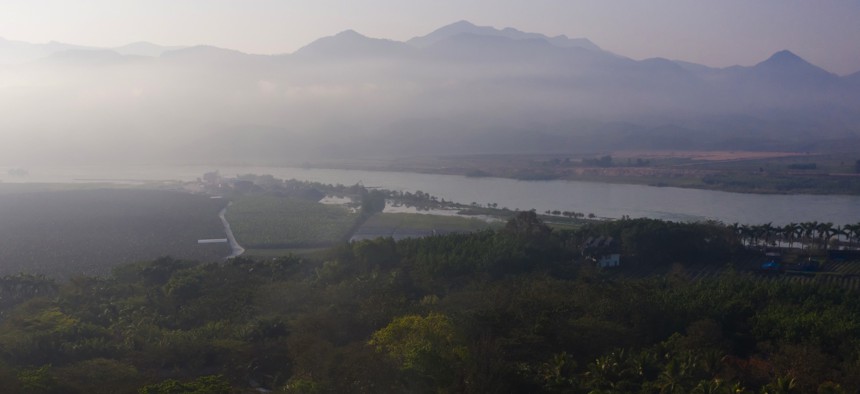SHERRI GOODMAN, ERIN SIKORSKY and FRANCESCO FEMIA

The current mantra in U.S. defense circles is that China is the “pacing threat” against which to measure the U.S. capability to influence the Indo-Pacific region and defend American interests globally. But there’s a major “shaping threat” at play as well: climate change. U.S. defense strategists will be unable to keep pace with China unless they fully take into account how climate change is reshaping the physical and geopolitical environments.
Indeed, China is already gaining influence and strategic advantage through its response to climate change impacts outside its borders. For example, Beijing is attempting to build soft power in countries threatened by climate hazards. In 2019, the Solomon Islands and Kiribati both cited support from China for tackling climate risks as reasons they had strengthened their relationship with Beijing. Another example: China controls many of the headwaters of key Asian rivers, and will be increasingly able to monopolize water resources for domestic needs—leverage that will become more acute as the climate continues to change. The just-released U.S. National Intelligence Estimate on climate security notes that Chinese dam building on the Mekong River is already a flashpoint, because it “threatens the smooth flow of water for agriculture and fishing on which other countries rely heavily, particularly Cambodia and Vietnam.”
Given this changing landscape, it is clear that if the United States does not bring a climate lens to its strategic security policy toward China, U.S. policymakers will be caught flat-footed. To prevent that scenario, we propose three lines of effort.
First, the Defense Department must integrate climate knowledge and understanding into its China analysis and operational planning. Just as the Pentagon assesses the order of battle for competitors and adversaries, it must also assess their climate vulnerabilities. Importantly, it must do the same with U.S. forces. The recent Defense Climate Risk Analysis identifies concrete ways in which this can be done: factors such as degradation of joint force performance, ground mobility, and naval operations due to extreme weather , as well as impacts on access, basing, and overflight. Each of these core military capabilities need to be “stress-tested” in modeling, simulation and wargaming, to understand where climate-related vulnerabilities are likely to arise. We also need to understand where Chinese, Russian, or other adversarial forces face climate stress: for example, from the extended monsoon season in Asia or permafrost thaw and collapse in the Arctic. All this should be used to build war plans—but also to anticipate Chinese and Russian behavior.
Second, the United States must identify non-combat areas where climate considerations indicate we need to compete with China. For example, it is in America’s interest to compete in the technological race to a decarbonized future. The demand for batteries, renewable energy, and other zero-emissions technologies are growing as the global temperature rises, and there will be a strategic penalty for lagging in this space. The United States, for example, needs to mine more rare earth elements and manufacture more renewable power components at home.
The U.S. should also compete for influence with key allies and partners by doing more to help them face climate security risks. A near- term opportunity here is to integrate climate security considerations into international planning efforts such as the NATO Climate Change and Security Action Plan. Further, as we note in our Climate Security Plan for America, the United States should add climate-related actions to the security assistance we provide allies, partners, and prospective partner nations, particularly in regions where China is active. Again, the new Defense Climate Risk Analysis lays out specific steps for such partnerships; the key now is for the Department and Congress to fund them.
And finally, there are arenas where we can cooperate with China. More transparency about climate science and data is a logical place to start. During the Cold War, the United States exchanged environmental information with Russian and Chinese forces about contamination at military bases, as a way to build trust, cooperation, and understanding. While that is very difficult at the moment, we need to also reduce the risk of our forces having an accident that leads to escalation of conflict.
The great power competition between the United States and China is taking place on a planet that is rapidly changing in unprecedented ways. China’s strategists appear to be taking this broadly into account; U.S. policymakers must do so as well.
No comments:
Post a Comment